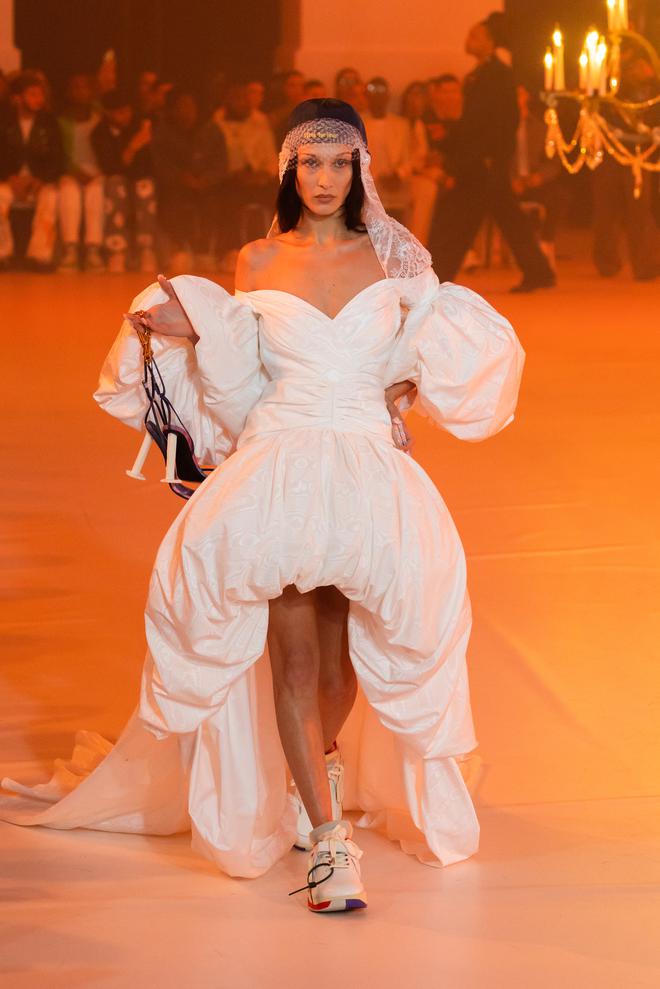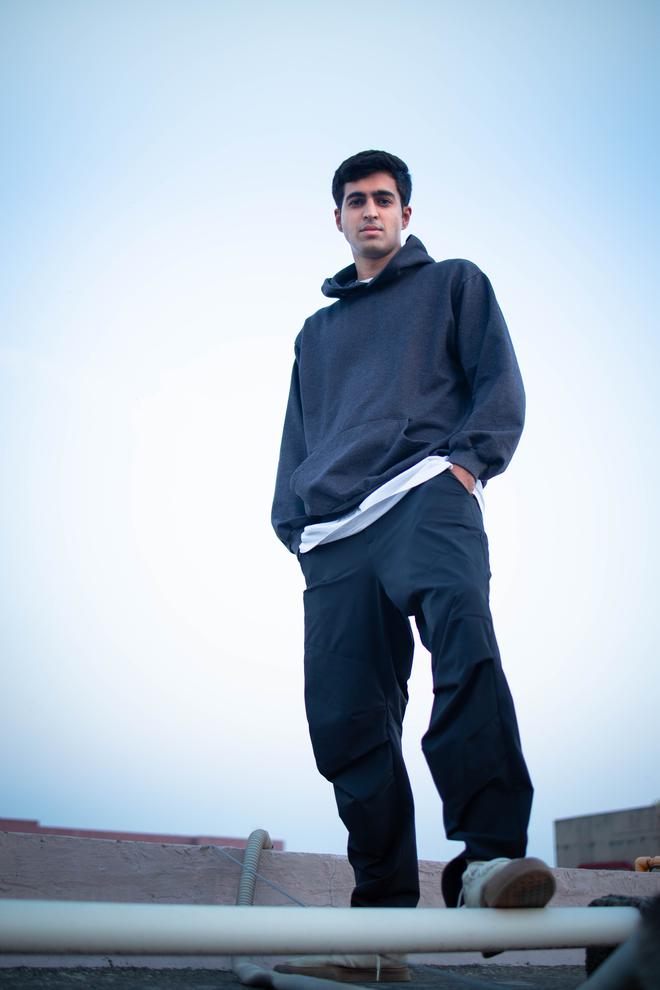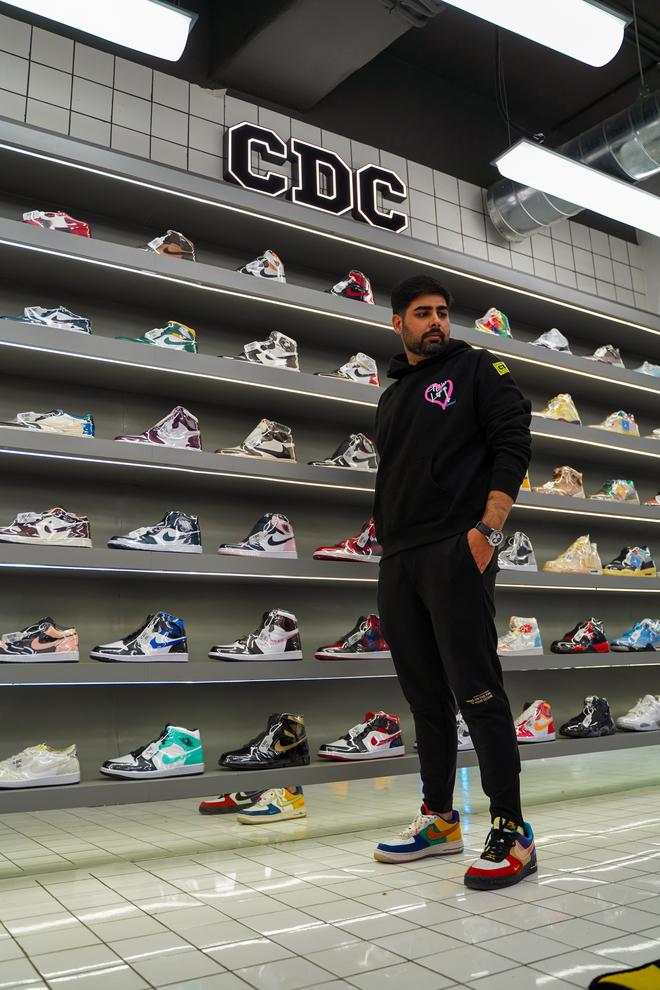Cover story |
It’s March 3. The time is around 7.30 am in India, and thousands of sneakerheads across the nation are in front of their laptops, tablets, and phones (in some cases, all three), logged in with different IDs — waiting to select the right size, hit the ‘Add to bag’ button, and checkout, all within the span of a few milliseconds. This isn’t the first time they are doing this and the repeated failure of multiple previous occasions doesn’t deter them from trying again. What if I get a W (sneaker-speak for ‘get lucky’), they fantasise.

This is how most launches (Supreme x Nike SB Dunk High ‘By Any Means’ release, in this case) play out online. Whether the early morning stress is worth it or not is subjective, but the hype is definitely real. The sneaker space has grown, matured and expanded into one massive commercial addiction that isn’t going to be shaken off anytime soon. It’s widespread, gender-neutral, age-nostalgic, and volleys against the strict, stuffy rules and rituals of a conformist era. This movement isn’t just about comfortable shoes, it’s an embodiment of the idea of freedom, an unabashed statement of self-expression, a brazen declaration of your individuality. Never mind my verbose definition; as Gen Z would succinctly sum it up, ‘it’s a vibe’!
Although the sneaker craze has had the world in its grips since the late 2000s — with the more affluent Indians satisfying their covets by shopping abroad — it only caught on locally with the opening of the VegNonVeg store in the capital. This was in 2016, and it was early days. A shoe store with sports shoes that weren’t meant for running was quite a shocker for the many first-timers who walked in.

Contrast this with the recent opening of the 1,600 sq ft Mainstreet Marketplace store, by young entrepreneur and reseller Vedant Lamba, in the same city (at The Dhan Mill in Chhatarpur), where rare silhouettes, aka ‘grails’ are being sold for prices many times over their launch retail tag (and none of the walk-ins seem to be shocked), and you realise that in barely half a decade, things have come a long way.
When two is a crowd
But I have dived in deep too soon; let me dial it back a bit. A sneaker, essentially, is a sports shoe. But unlike active gear today, which is based on the latest R&D to make an athlete go faster and further, here the focus is on old styles that were “cutting-edge” back in the 80s when they were first launched. Today, while their performance prowess may be outdated, their comfort stays and, most importantly, their looks remain unparalleled. Think of it like a vintage car — it has a certain old-world charm and nostalgic appeal that can be quite timeless.
Ironically, for all its claims about nurturing individuality and democracy, the space is crowded by two major brands: Air Jordan (by Nike) and Yeezy (by Adidas Originals). Sure Reebok and Puma surf the scene, as do Fila, Converse and Vans, delivering some super pairs now and then — and New Balance has seen revived interest of late — but more often than not, when sneakerheads get together about the ‘one that got away’, it’s one of the afore-mentioned two or a collab thereof.
Also read | Dissecting India’s sneaker culture
Retail or reseller?
So how does one acquire these ‘grails’? Besides the early-morning rejection I described a few paragraphs ago, stores like Superkicks do a great service. They are the official channels to launch these shoes in India. “Retail being the first contact for new products makes it the place where we can tell the brand stories effectively and introduce the narrative of the products to the consumers,” says Sangeet Paryani, founder of Superkicks.
The brand has a major on-ground and online presence and recently launched an outpost in Guwahati. From organising in-store launches to online raffles (which became quite normal during the pandemic and consequent lockdowns), he and his team have managed to retain the democracy and fairness that the system is all about.
Inventories across the board are getting a lot larger and more curated, too. “Last year, we became Nike’s only neighbourhood door [NBHD] in the country and got an adidas Fashion Influencer categorisation. This gets us some of the most sought after and exclusive sneakers in the country,” says Abhineet Singh, who co-founded VegNonVeg with Anand Ahuja. “We’ve also been busy bringing more brands into the store. We recently introduced Veja to the mix and reintroduced New Balance in the market. Our product mix is also a lot more lifestyle oriented with apparel, accessories and collectibles like Bearbricks and Princess Pea and Banksy’s brandalism all contributing to a large portion of the inventory.”
But back to those grails. If we can’t score at the store or online, it leaves us with one last way to acquire these shoes — to buy from resellers like Mainstreet Marketplace and Crepdog Crew, international platforms like StockX, or following link-up accounts like @sneakerpreacher.in, where these pairs will be listed for prices that are purely driven by demand. “Sneakers are an asset class. People have been investing in them for a while now in the West and this trend has just started recently in India,” says Sanjay Khemchandani of sneakerpreacher.in. “Wherever there is money to be made, people are going to jump on the train and some sneakers do outperform. That is the hard truth.” To give you an idea of just how much money we are talking here, the Sean Wotherspoon x Nike Air Max 1/97 launched (internationally) in 2017 for around ₹15,000. Today, a pair could go for anything around ₹1,00,000!
Make way for the bots
Resellers like Lamba started small, buying and selling (aka ‘flipping’) a few models here and there, making a fast buck in the process, but eventually their trade grew, growing both in numbers of pairs moving through them and the margins. Today, it’s a sizeable business with tremendous growth opportunities; demand and supply at its rudimentary finest. Because once a shoe is gone from retail outlets (which are limited to metros), the only place to find it again is with resellers.

One of the common complaints today, however, is that resellers use ‘bots’ to crowd launch sites and block off access for the individual enthusiast with their single login id. Some people call foul, but Lamba has a modern-but-holistic reply. “Everyone who is complaining about people using bots also has access to the same bots. You pay the premium in the resale industry for the service of connection, authenticity, and things like that. I think it’s perfectly fair,” he says.
While nobody is taking sides in the perennial retailer vs reseller debate, Khemchandani says both are equally important. “Retailers because the more retail stores, the more pairs come to India. And resellers because they help you cop pairs that you missed out on and help you sell pairs, thus keeping your sneaker rotation strong.”
The hefty hike
Balpreet Singh, an avid collector and a rare size 11, laments the general lack of availability in his size and the higher prices he has to shell out for them. “Big feet matter!” he quips. He has a point. UK5 and UK8 are in high demand (and come with a hefty price tag), but sizes above UK10 are pricey, too, on account of rarity. Sometimes they are almost 10%-20% more expensive than the resale price — which, mind you, is already anywhere between 20%-100% (and at times, 500%) over retail price!
Another sneakerhead, who doesn’t wish to be named, alleged a collusion between retailers and resellers, which “backdoors rare pairs even before they officially release in order to inflate prices further”.
Paryani, however, says it isn’t all about rare pairs and confesses to loving the Waffle One construction by Nike, which is easily available at retail prices in many colours. Similarly shoes like adidas Superstars, which are “comfortable, have history attached to it, and some style quotient” are always a good place to start.
Singh, of VegNonVeg, is of a similar bent of mind. “You can get a great pair of sneakers for not a lot of money. High-top Converse are a great example of this. No one who knows sneakers will ever look down upon them. They are inexpensive, forever relevant and loved universally,” he says. “But I’m not surprised at the gazillion dollar sneakers. It comes down to how rare or limited they are. You can ask the same question about art or fashion. We pay for exclusivity, design, concept and material. Value is in the eye of the beholder or on the feet in our case!”







